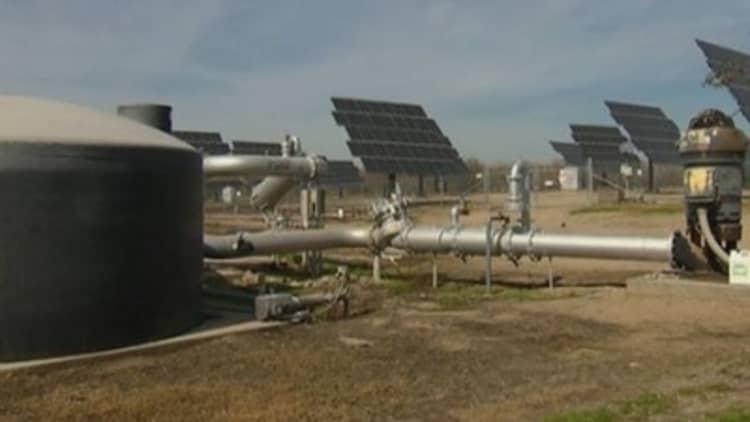
Sustainable, renewable forms of energy like solar power are starting to gain an edge over their fossil-based rivals. But how do you store sunshine?
The U.S. Energy Information Administration has predicted that this year, "total renewables used for electricity and heat generation will grow by 3.4 per cent," while the International Energy Agency (IEA) has stated that, "Globally, renewable electricity generation is now on par with that of natural gas."
Read MoreCan fossil fuels ever be 'guilt-free'?
In this brave new world, where renewables dovetail with more conventional sources of energy, storage is going to become increasingly important. EnerVault, a California based company founded in 2008, has developed what it describes as, "grid-scale, long-duration energy storage technology."
The development of reliable and cost-efficient storage of renewables such as wind and solar has so far proved to be a challenge. EnerVault's system is based on the use of "iron-chromium redox flow battery technology pioneered by NASA," according to the company's website.
Read MoreSolar sheds some light on Cambodian students
Ron Mosso is the CEO of EnerVault. "This process is based on electrochemical energy storage," he told CNBC's Sustainable Energy. "We are converting electricity into chemical energy… storing it as chemical energy and then converting it back into electrical energy when we want to deliver it to a user," he added.
It is this process which allows large amounts of electricity to be stored long term. The impact of the technology on the environment is low, according to Mosso. "We are using iron and chromium as the active elements to store the energy," he said.
"Both iron and chromium are broadly abundant in the earth's crust - they are readily available and low cost materials to use for storing energy," he added.
Flat-pack bulb brings light to disaster zones
Mosso went on to explain that "the state of the iron and the chromium in our system is non-toxic to humans, so the system is very safe for people to be around and has a very small environmental footprint."
Last year, a pilot project used EnerVault technology to provide power and irrigate 300 acres of almond trees in California. The company is hoping that its technology will eventually be used by commercial, industrial and micro grid customers.





